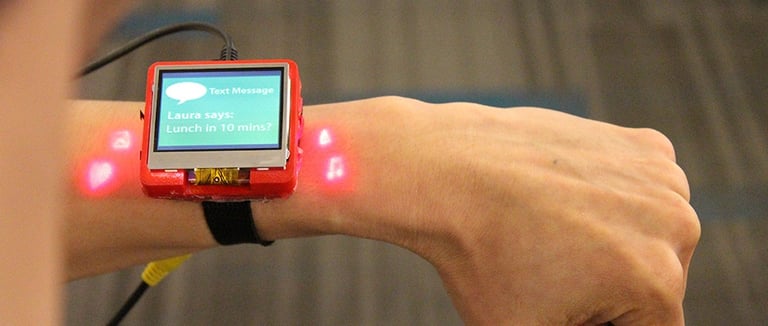Expanding the small screen interface with projected skin buttons. Yes, that’s what I said, projected skin buttons. Whaaaaaaat? Think of it this way, smart watches or devices similar to those that we wear and go are typically designed with small screens for our comfort.

However, that doesn’t make them easy to interact with. Computing power in these small devices is getting more powerful and we’d like to add more functionality.
O’kaaay, go on...
And, we all don’t want an iPhone 6 Plus size smart watch strapped to our wrists. But most humans past the age of 5yrs, just like me, suffer from the fat finger syndrome on these small interfaces.
There’s an answer. Researchers: Gierad Laput, Robert Xiao, Xiang ‘Anthony’ Chen, Scott E. Hudson, and Chris Harrison presented their solution to extend small screen user interfaces by demonstrating their technology to project buttons onto your skin from the small wearable device (aka, a watch). The research presented in 2014 proposes extending the watch’s surface by using projections of buttons that control the interface of the device on the wearer’s skin. See the entire research presented here on
What does this have to with marketing & customer engagement?
This may be in the camp of technology research now but within a few years, we marketers are going to be concerned with which button the wearer clicked and what they were doing at the moment of the click. Add geo-location and biometrics on-top of that equation and real-time marketing just took on a whole new definition. Gotcha thinking, yet?